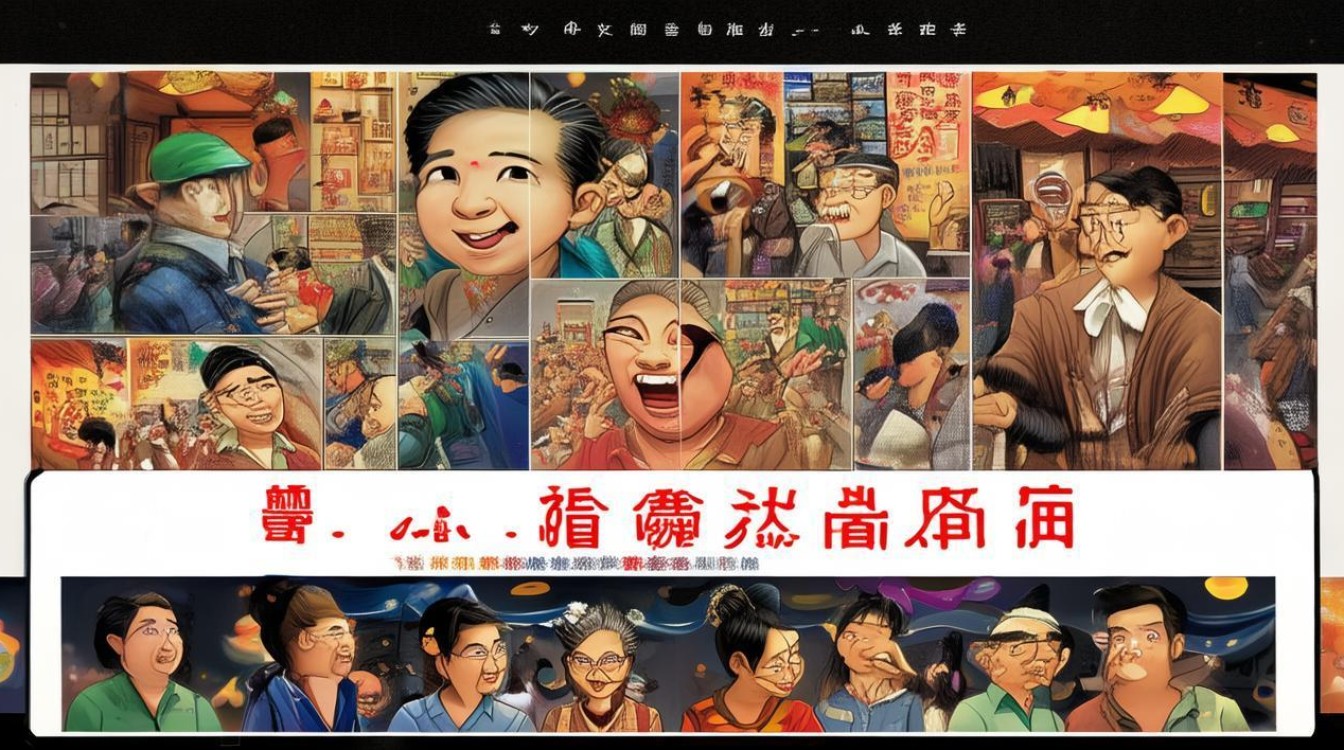Chinese Comedy: A Blend of Tradition and Modernity
Chinese comedy, often referred to as xiàngsheng (相声) or crosstalk, is a vibrant and beloved art form that has entertained audiences for centuries. Rooted in folk traditions and evolving with modern sensibilities, it reflects the humor, wit, and cultural nuances of Chinese society. From the bustling teahouses of old Beijing to the digital platforms of today, Chinese comedy continues to adapt, innovate, and bring joy to millions.

The Roots of Chinese Comedy
Chinese comedy has deep historical roots, with xiàngsheng emerging during the Qing Dynasty (1644–1912). Originating in Tianjin and Beijing, this comedic duo performance features one chǒngpēng (straight man) and one dǒupéng (funny man) engaging in witty banter, wordplay, and satire. Traditional xiàngsheng often drew from everyday life, mocking societal norms, human quirks, and political absurdities with clever humor.
Another classic form is kuaishu (快书), a rapid-fire storytelling style combined with comedic timing. Performers used exaggerated gestures, rhythmic speech, and facial expressions to deliver humorous narratives, often inspired by folklore or historical events. These traditional forms laid the foundation for Chinese comedy, emphasizing linguistic dexterity and cultural resonance.
Modern Evolution: From Stage to Screen
In the 20th century, Chinese comedy expanded beyond traditional formats. The rise of cinema brought iconic comedians like Charlie Chaplin-inspired actor Zheng Peizi and the Shanghai Comedians, who blended slapstick with social commentary. The post-reform era saw the emergence of xìqǔ (戏曲 comedy), which incorporated elements of opera and modern humor.
The 21st century has revolutionized Chinese comedy, with digital platforms like Douyin (TikTok) and Bilibili enabling viral comedic skits, stand-up specials, and improv shows. Comedians like Shen Teng and Xiao Yang have gained nationwide fame through their relatable humor, sharp observations, and ability to tackle contemporary issues such as urban life, work stress, and generational gaps. Modern Chinese comedy often blends Western stand-up techniques with local flavors, creating a unique hybrid style.
Themes and Styles
Chinese comedy thrives on diversity, with themes ranging from lighthearted family humor to sharp political satire. Below is a table showcasing common comedic styles and their characteristics:
| Style | Key Features | Examples |
|---|---|---|
| Xiàngsheng | Duo performance, wordplay, puns, social critique | Ma Ji & Tang Jiezhong |
| Stand-up Comedy | Monologue format, personal anecdotes, observational humor | Shen Teng, Huang Xiaoming |
| Skit Comedy | Short skits, exaggerated characters, situational humor | Happy Camp, Mr. Chin* |
| Improv Comedy | Unscripted, audience interaction, quick wit | Improv Comedy Club (Beijing) |
Comedians often use irony, self-deprecation, and cultural references to connect with audiences. For instance, crosstalk performers might mock bureaucratic inefficiency, while stand-up comedians joke about the pressures of the hukou (household registration) system or the 996 work culture.
Challenges and Controversies
Despite its popularity, Chinese comedy faces challenges. Censorship limits the scope of political satire, forcing comedians to rely on safer, apolitical topics. Additionally, the rapid commercialization of comedy has led to concerns about diluted content and formulaic humor. Some critics argue that modern comedy lacks the depth of traditional forms, prioritizing virality over substance.
However, many comedians navigate these constraints by focusing on universal themes like love, family, and ambition. Others use subtle metaphors and allegories to address sensitive issues, demonstrating creativity within boundaries.
The Global Influence of Chinese Comedy
As Chinese culture gains global prominence, so does its comedy. International audiences are increasingly exposed to Chinese comedians through streaming platforms like Netflix and YouTube. Performers like Joe Wong have bridged cultural gaps with bilingual humor, while xiàngsheng troupes have toured internationally, showcasing China’s comedic heritage.
Moreover, Chinese comedy influences global trends. For example, the skit comedy format has inspired similar formats in other countries, blending local humor with Chinese-style absurdity. This cross-cultural exchange enriches the global comedy landscape.
FAQs
Q1: What is the difference between xiàngsheng and Western stand-up comedy?
A1: Xiàngsheng is a duo performance focused on wordplay, rhythm, and cultural references, while Western stand-up is typically a monologue emphasizing personal stories and observational humor. Xiàngsheng also relies more on traditional comedic techniques, whereas stand-up often incorporates improvisation and audience interaction.
Q2: How has social media impacted Chinese comedy?
A2: Social media has democratized comedy, allowing amateur comedians to gain traction through short videos and live streams. It has also accelerated trends, enabling viral content to reach millions overnight. However, it has also led to shorter attention spans and a focus on quick laughs over nuanced storytelling.
In conclusion, Chinese comedy is a dynamic art form that honors tradition while embracing innovation. From the teahouses of old to the digital age, it continues to reflect the spirit of Chinese society, one laugh at a time. As it evolves, its ability to adapt and resonate ensures that Chinese comedy will remain a cherished part of global culture.











